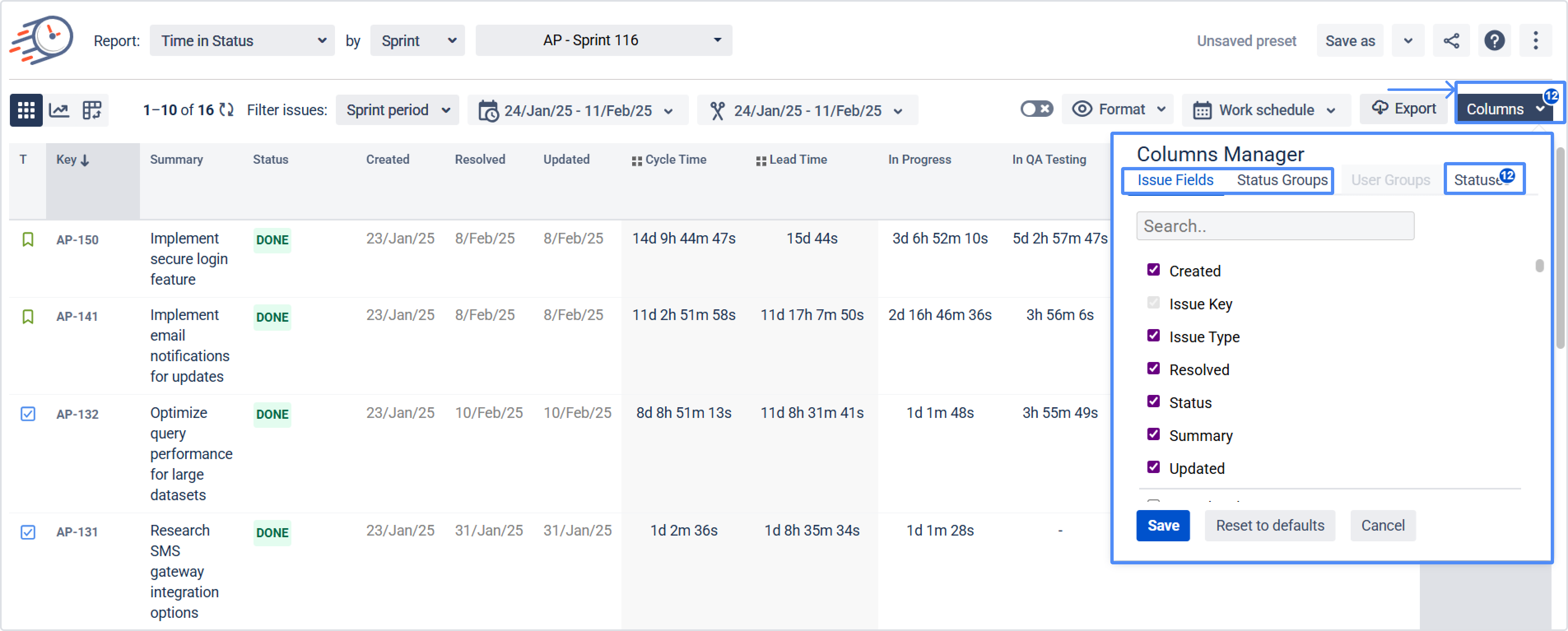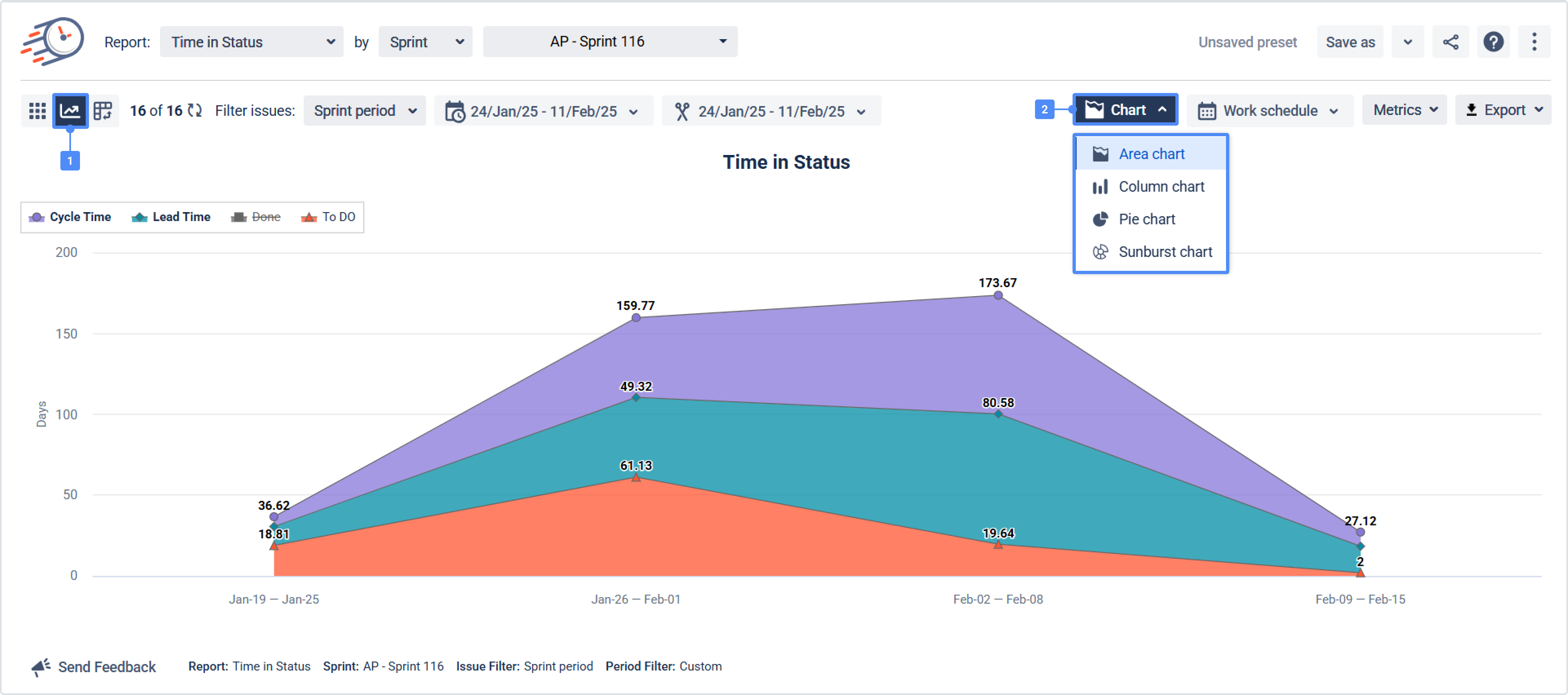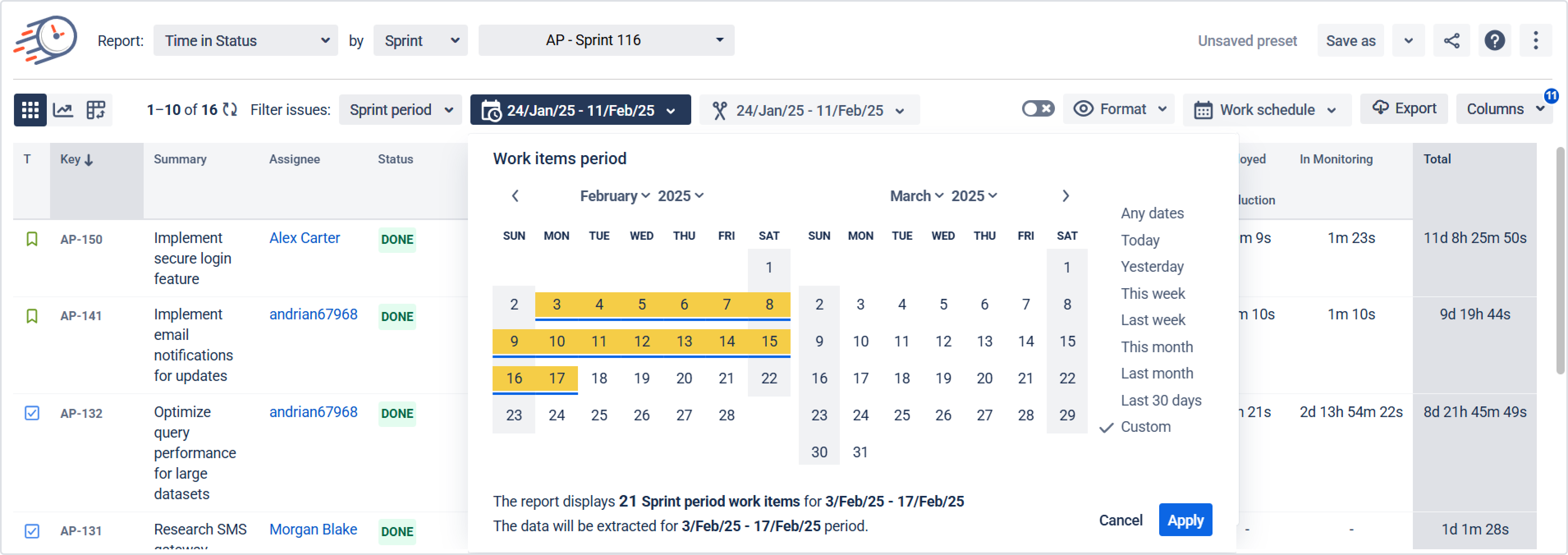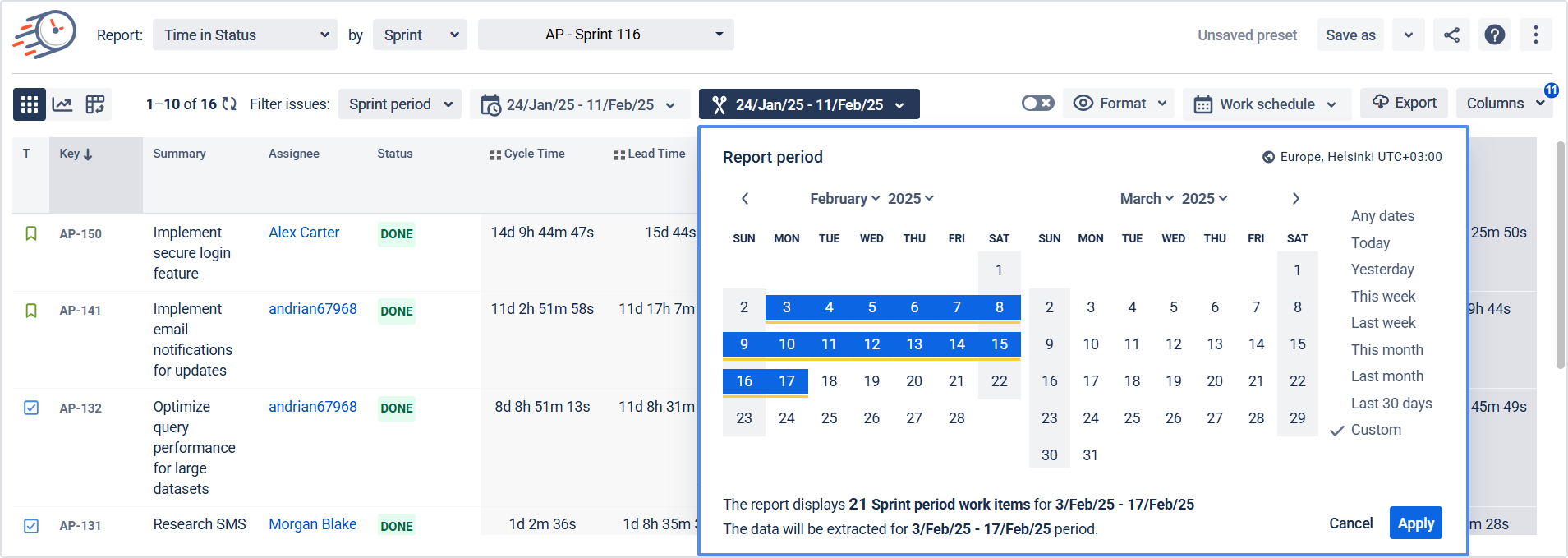Reporting Page Settings Table View and Charts
1. Select the report type
Choose the report you want to generate (see the list of reports).

2. Filter the data
When generating the reports, you can filter data by:
Assignee
Filter
Label
Project
Reporter
Sprint
JQL
Epic

3. Choose a Calendar
Select a necessary Calendar to generate data. There, you can choose a custom calendar you've added previously or a default 24/7 one.

4. Column Manager
In the Column manager, you can manage the Work Item Fields, Status Groups (read more about Status Groups), User Groups (read more about User Groups) and Statuses.

5. Chart Reports
All reports are available as Grid and Charts.
Three types of graphs are available: Pie, Bar and Area Charts.
For more information, visit Chart Reports View.

6. Filtering Work items
Use the Filter work items functionality to customize report timeframes.

You can select three date ranges from the drop-down list that allows sorting work items depending on the dates of creating, updating, or solving work items.
Created
Updated
Resolved
If you have filtered the work item list by sprint, you can select the date period according to the sprint period

Then, you can choose the period in which you want to get the report.
By clicking Any dates, you’ll get 2 calendars displayed on a screen.
Work items period – to select work items Created, Updated, or Resolved during the required period.

Report period – to get work items for a specific date or date range without considering creating, updating, or resolving.

Read more in Setting Work Items and Report Periods in Jira Time in Status app section.
7. Choose a Time format
The Format option lets you select the time format how the status duration will be displayed:
Minutes
HoursMinutes
Hours:Minutes
DaysHoursMinutes
Decimal Weeks
Decimal Hours
Decimal Days
Business Decimal Weeks
Business Decimal Days
Business DaysHoursMinutes
Learn more > Time format.

Note
To extract data for analysis, please choose one of the Decimal time formats (Decimal Hours, Decimal Days or Decimal Weeks). It will enable you to perform calculations on the exported data and build charts.
Business DHM, Business Decimal Days and Business Decimal Weeks formats show data according to your determined business days.
8. Sorting data
Click the column to sort the values in descending or ascending order. You can sort any column, including Jira fields and calculation data.
Sorting data is available for all reports based on work items or assignees.

9. Share reports
Click the Share button to create and copy the link for sharing with your team.

If you need help or want to ask questions, please contact SaaSJet Support or email us at support@saasjet.atlassian.net
Haven’t worked with the add-on yet? Give it a try